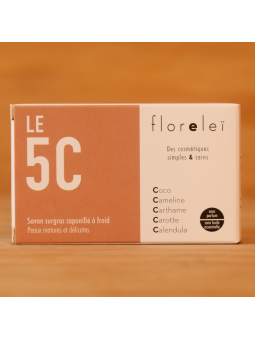Camelina oil
The oil we use is...
Technical data sheet:
Organic virgin camelina
oilINCIname
: Camelina sativa seed
oilCASnumber
: 68956-68-3Composition
: Virgin camelina oil first cold pressedLabelling
:
Certified by Bureau Veritas Certification France / FR-BIO 10Certifiedas
100% organic by Ecocert Greenlife according to COSMOS standard.
Origin: FranceSupplier
:France
Composition & description
Approximately 40% essential polyunsaturated fatty acid (alpha linoleic) therefore very rich in Omega 3 (i.e. 10 times more than the average of other oils); approximately 20% essential polyunsaturated fatty acid (linoleic) therefore omega 6; nearly 29% monounsaturated fatty acid (oleic) therefore omega 9 and nearly 10% saturated fatty acid (arachidic, palmitic and stearic acid). it contains about 2% phytosterols (emollient and healing active ingredient) and traces of vitamin E.
Also called "German sesame" or "small flax", camelina was cultivated 3000 years ago in Europe for its nutritional qualities; it was also used in the manufacture of soaps, paints etc... It fell into oblivion until 1998, when the DGCCRF recognized it as an alicament*. It is a local oil and is found mainly in France (except in the Mediterranean basin) and in Europe.
*Food product in which are present elements considered particularly beneficial for health.
Properties
Antioxidant, anti-ageing, nourishing, regenerating, repairing (body and hair), emollient, soothing, skin healing ( healthy food).
Due to its high level of omega 3, it is recommended for mature, fragile, very sensitive and/or reddened skin. It is also recommended for hair care and is very popular for making soaps.
Moreover, it is a very penetrating oil that does not leave a greasy film on the skin.
The 5C
Coconut, Camelina, Safflower, Calendula, Carrot...
Camelina Jojoba Day Oil
Daily care for mature and delicate skin




Leave a comment